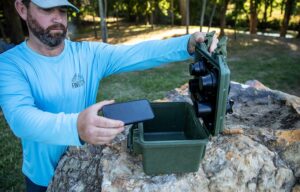
Langtang Trek Cost vs. Experience: Worth Every Penny:
In the heart of the Nepalese Himalayas, tucked away north of Kathmandu and just south of the Tibetan border, lies one of Nepal’s most beautiful and culturally rich trekking destinations—the Langtang Valley. Known for its dramatic landscapes, warm Tamang hospitality, and ease of access compared to other Himalayan regions, the Langtang Valley Trek has steadily risen in popularity among trekkers seeking a rewarding journey without the intense crowds found in Annapurna or Everest. But how does the Langtang Valley Trek cost compare to the experience it offers? Is it truly worth every penny? Let’s dive deep into the trek to Langtang, breaking down the costs involved and the unforgettable experiences that justify them.
The Langtang Valley Trek: A Gateway to Pristine Himalayan Beauty
The Langtang Valley Trek is often described as one of the most underrated treks in Nepal. Stretching through the Langtang National Park, the trail passes through lush forests of rhododendron and bamboo, picturesque villages, yak pastures, glacial streams, and finally leads to the high alpine meadows of Kyanjin Gompa—one of the trek’s most iconic locations.
It’s not just about the scenery, though. The cultural aspect is just as enriching. The Tamang people, an indigenous ethnic group of the region, offer a unique cultural experience that includes Tibetan-influenced traditions, Buddhist monasteries, prayer flags fluttering in the wind, and warm, homemade meals in family-run teahouses.
The route typically starts from Syabrubesi, a small town accessible by road from Kathmandu. From there, trekkers make their way through Lama Hotel, Langtang village, and finally reach Kyanjin Gompa, often ascending further to Tserko Ri (4,984 meters) for panoramic Himalayan views. This trek usually lasts between 7 to 10 days, depending on itinerary variations and side trips.
Langtang Valley Trek Price: A Breakdown of Costs
When evaluating whether the Langtang trek is worth the price, it’s essential to understand where your money goes. The Langtang Valley Trek price is among the most budget-friendly Himalayan treks, especially when compared to Everest Base Camp or Annapurna Circuit. However, several factors influence the total cost, such as trekking style (guided vs. independent), accommodations, transportation, permits, and food.
1. Permits and Entry Fees
To enter the Langtang region, trekkers need:
- Langtang National Park Entry Permit: NPR 3,000 (approx. USD 22)
- TIMS Card (Trekkers’ Information Management System): NPR 2,000 (approx. USD 15)
These permits are mandatory and help with trail maintenance, rescue operations, and environmental conservation.
2. Transportation
The journey begins with a drive from Kathmandu to Syabrubesi, which takes around 7–8 hours by jeep or bus. A local bus ticket costs about NPR 1,000–1,500 (USD 7–12), while a private jeep may range from USD 100 to 150 (split among a group). Round-trip transport typically costs USD 25–50 per person.
3. Guide and Porter Fees
Guides charge around USD 25–30 per day. A porter who helps carry your load typically charges USD 18–25 per day. While not mandatory, their assistance greatly enhances comfort and supports the local economy.
4. Accommodation and Meals
Teahouse accommodation in Langtang is relatively affordable:
- Rooms: USD 5–10 per night
- Meals: USD 5–8 per dish
A full day of food and lodging generally costs USD 25–35. Over 8–10 days, expect to spend around USD 250–350 on accommodation and meals.
5. Miscellaneous
This includes snacks, Wi-Fi (USD 2–5 per use), hot showers (USD 2–4), charging devices, and tips for guides/porters. Budgeting an extra USD 50–100 is wise.
Total Langtang Valley Trek Price Estimate (Per Person):
- Budget (independent): USD 350–450
- Mid-range (guided): USD 600–800
- Premium (package tour): USD 900–1,200
The Experience: Trek to Langtang and Discover Hidden Wonders
The trek to Langtang is more than a mountain hike; it’s a soulful journey through culture, community, and nature. Each day brings something new—crossing hanging bridges, listening to the rushing Langtang Khola, watching the sunrise paint the snowy peaks in orange, or sipping butter tea with a local family.
After the 2015 earthquake and subsequent landslide that tragically hit Langtang village, the community has worked hard to rebuild. Choosing to trek here directly supports this resilient region and helps preserve its culture and livelihoods.
Wildlife lovers will appreciate the chance to spot red pandas, Himalayan tahrs, langurs, and more inside the national park. Meanwhile, photographers and nature enthusiasts will marvel at the ever-changing terrain—from dense pine forests to glacier-fed rivers and rugged mountainscapes.
The spiritual heart of the trek is Kyanjin Gompa. The ancient monastery sits beneath towering peaks, and a short hike up to Tserko Ri rewards adventurers with a panoramic 360-degree view of the surrounding giants. This moment, alone at the top, makes every penny spent worthwhile.
Langtang vs. Other Treks: Value for Money
Many trekkers compare Langtang with Everest or Annapurna when choosing their adventure. While those treks have their unique merits, Langtang stands out in several ways:
- Proximity to Kathmandu reduces travel costs and saves time.
- Less crowded trails allow for a more intimate experience with nature and culture.
- Shorter duration makes it ideal for those with limited time.
- Lower elevation (yet still high enough for thrilling alpine experiences) means less risk of altitude sickness.
In terms of value for money, Langtang arguably offers the most rewarding cultural and scenic combination without the hefty expenses of Everest logistics or Annapurna’s longer itineraries.
When to Trek Langtang for the Best Experience
The best time to trek Langtang is during the spring (March to May) and autumn (September to November). These seasons offer clear skies, comfortable temperatures, and vibrant nature. Spring bursts with rhododendron blooms, while autumn brings crystal-clear mountain views.
The monsoon season (June to August) makes trails slippery and leech-prone, though it’s lush and quiet. Winter (December to February) offers serene beauty but requires preparation for snow and cold.
Choosing the right season impacts both your experience and your costs, as prices can fluctuate slightly during peak periods.
Is It Worth Every Penny?
Absolutely. When you consider the cost-to-experience ratio, Langtang offers immense value. For under USD 1,000, you can have a complete Himalayan trekking experience that includes:
- Authentic cultural immersion
- Spectacular Himalayan vistas
- Wildlife encounters
- Spiritual heritage sites
- Rustic yet cozy accommodations
- A tangible impact on local livelihoods
You don’t just get a trek—you gain memories, perspectives, and connections that money can’t fully measure.
Moreover, the Langtang Valley Trek is flexible. You can customize your trip to fit your budget, whether that means hiring a private guide or going fully independent. It’s also relatively easy to arrange permits and logistics without needing high-end agencies, making it ideal for solo travelers and backpackers.
Tips to Maximize Your Langtang Experience
- Hire a local guide: They provide rich insights into the region’s culture and ensure your safety.
- Start early each day: To avoid afternoon clouds and maximize views.
- Pack smart: Bring essentials like a down jacket, sunscreen, water purification tablets, and first aid.
- Respect the culture: Dress modestly, ask before taking photos, and engage with locals respectfully.
- Travel responsibly: Carry out your waste, support eco-friendly lodges, and minimize plastic usage.
Final Thoughts
The Langtang Valley Trek is a hidden Himalayan gem that punches far above its weight in terms of cost versus experience. Whether you’re a seasoned trekker looking for a peaceful alternative to busier trails or a first-time adventurer eager to explore Nepal’s wonders, Langtang delivers.
The region’s blend of majestic scenery, cultural authenticity, and affordability make it a standout choice for anyone curious about the Himalayas. The Langtang Valley Trek price may be modest, but the memories, connections, and inspiration you bring home are priceless.
FAQs
- How long is the Langtang Valley Trek?
Most trekkers complete the Langtang Valley Trek in 7 to 10 days, including travel to and from Kathmandu. - Do I need a guide for Langtang Trek?
While not mandatory, hiring a guide enhances your experience with cultural insights and helps in navigating the trail safely. - Is the Langtang Valley Trek difficult?
It’s considered a moderate trek. With proper acclimatization and fitness, most people can complete it comfortably. - What is the highest point of the Langtang Valley Trek?
The highest commonly reached point is Tserko Ri at 4,984 meters, offering stunning Himalayan views. - Is Langtang safe after the 2015 earthquake?
Yes, Langtang has been rebuilt and is safe for trekking. Trails and infrastructure have improved significantly since the disaster.


